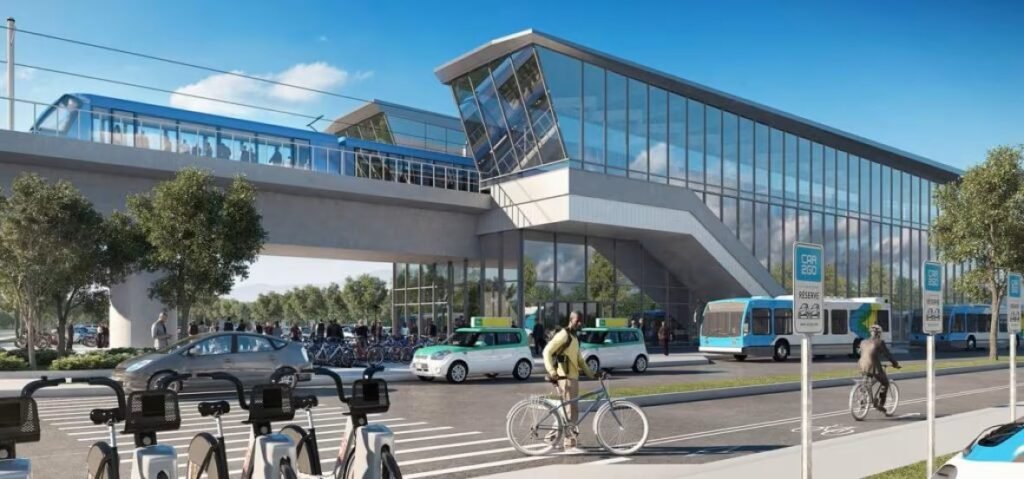Anticipation and Concerns Surrounding the Deux-Montagnes REM Launch
After nearly four years without a commuter train, residents of Deux-Montagnes and its surrounding areas are eagerly anticipating the arrival of the Réseau express métropolitain (REM) to facilitate their transportation to downtown Montreal. However, their excitement is tempered with impatience and concerns, as they will have to wait until 2025 for the service to commence […]

After nearly four years without a commuter train, residents of Deux-Montagnes and its surrounding areas are eagerly anticipating the arrival of the Réseau express métropolitain (REM) to facilitate their transportation to downtown Montreal. However, their excitement is tempered with impatience and concerns, as they will have to wait until 2025 for the service to commence due to complications in the Mont-Royal tunnel.
The Long Wait
The prolonged wait has been a significant inconvenience for residents. The Deux-Montagnes line, once a reliable and efficient means of commuting, has been out of service, leaving many to rely on alternative and often less convenient modes of transportation. The disruption has affected daily routines, adding time and stress to commutes that were once straightforward.
“We cannot move forward on [the date of start-up of the REM] because our priority is really to focus on the end of the tunnel work, which is really the work on the critical path of the project,” explained Jean-Philippe Pelletier, senior director for the western phase of the REM project at CDPQ Infra. His statement underscores the complexity and importance of the tunnel work, which is a pivotal component of the REM project.
Progress Amidst Delays
Despite the delays, progress is being made. Tests are currently being conducted on the Deux-Montagnes line, and the station itself is in the final stages of construction. Unlike the previous boarding platform for exo trains, the new REM platform is designed to protect users from bad weather, enhancing the overall commuter experience. Additionally, incentive parking with a capacity for more than 1,200 vehicles will be available, aiming to make the transition to the REM as seamless as possible for users.
Noise Concerns
However, alongside the anticipation, there are growing fears among residents living near the line linking Deux-Montagnes to the city center. The primary concern is the potential for noise disturbances similar to those experienced by citizens of Griffintown.
Addressing Noise Fears
In response to these concerns, Jean-Philippe Pelletier has reassured residents that the noise levels on the North Shore will not mirror those on the South Shore. “The REM on the North Shore does not necessarily make the same noise as on the South Shore. For what? Because the structures it sits on are not the same. On the South Shore, we use a lot of steel beams. Here, on Deux-Montagnes, we are more on ballast and concrete beams, so the resonance will not be the same,” he explained.
This difference in construction materials and methods is expected to mitigate the noise impact, offering some solace to concerned residents. The use of ballast and concrete beams, as opposed to steel beams, should result in less resonance and, consequently, less noise.
The Broader Impact
The arrival of the REM is poised to significantly impact the daily lives of Deux-Montagnes residents. On one hand, it promises a return to efficient, reliable transportation, reducing commute times and easing daily travel. On the other hand, the project’s delays and the associated noise concerns have created a sense of unease and frustration within the community.
Looking Ahead
As the 2025 launch date approaches, the focus remains on completing the critical work in the Mont-Royal tunnel and ensuring that the REM is ready to serve the public effectively. The continued testing and finalization of station construction are positive signs of progress, even if the wait feels interminable for those affected.
In the interim, communication between CDPQ Infra and the residents will be crucial. Keeping the community informed about progress, addressing concerns transparently, and demonstrating a commitment to mitigating negative impacts will be key to maintaining public trust and support.
